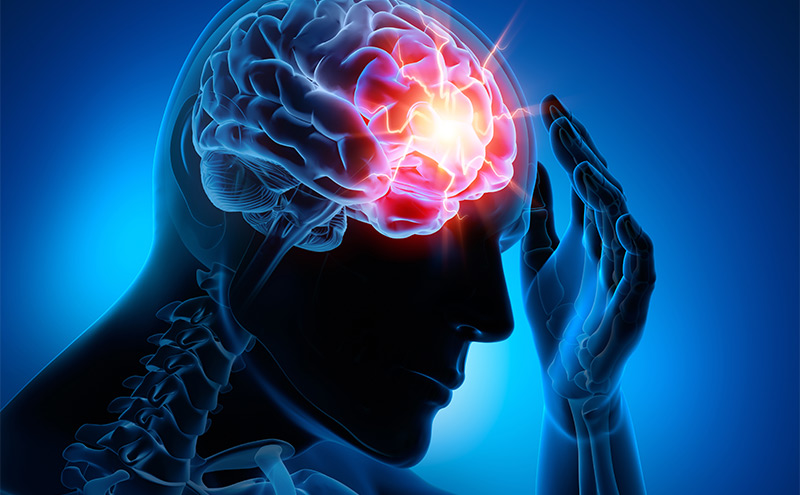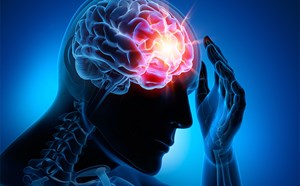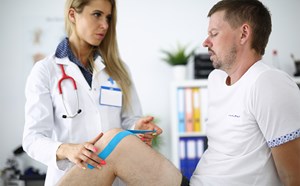
Concussion Management in the Emergency Department
Author: Alex Bonilla, MD
Editor: R. Conner Dixon, MD, CAQ-SM
Case Introduction
A 22-year-old male presents to the emergency department with several days of headache, dizziness, and fatigue. He reports that symptoms began several hours after he was accidentally kicked in the head during a recreational soccer game. He is concerned that his persistent symptoms are interfering with his daily activities. He wonders whether he needs a CT head and if he is going to improve soon…
Introduction
A concussion is a mild traumatic brain injury (mTBI) caused by a direct blow to the head, neck, or body, resulting in transient brain dysfunction. The impact initiates a complex cascade of neurotransmitter release and metabolic changes within the brain, leading to altered cerebral blood flow, axonal damage, and inflammation [1][2].
Concussions are commonly associated with sports-related injuries, such as tackles in football, rebound collisions in basketball, or body checks in lacrosse. They can also result from falls, motor vehicle crashes, assaults, and direct blows to the head [3][4]. While not life-threatening themselves, concussions cause significant morbidity and impact daily functioning.
Signs and Symptoms
Concussion symptoms are broad and may be grouped into symptom domains such as somatic, cognitive, vestibular/oculomotor, emotional, and sleep (Table 1) [1][3][5]. Symptoms may present immediately or have delayed onset, and may resolve by the time of ED evaluation [5]. No single symptom is diagnostic of a concussion, but a higher number and severity of symptoms are associated with an increased risk of prolonged recovery [5].
Table 1:
Concussion domains and associated symptoms [1][3][5]
Domain
Symptoms
Somatic
- Headache
- Lightheadedness
- Sound sensitivity
- Nausea and vomiting
- Loss of consciousness
- Seizures
Cognitive
- Confusion/disorientation
- Memory problems
- Difficulty concentrating
- Mental fogginess
- Slowed or repetitive speech
Vestibular/Oculomotor
- Dizziness
- Balance issues
- Tinnitus
- Light sensitivity
- Blurred vision, eye strain, or difficulty eye tracking
Sleep
- Difficulties falling or remaining asleep
- Increased or decreased sleep
- Poor sleep quality
Affective/Emotional
- Irritability
- Emotional lability
- Anxiety, depression
Diagnosis
A concussion is ultimately a clinical diagnosis and can be made if any of the above symptoms are present [1]. In the ED, imaging is not necessary to confirm a diagnosis and is guided by clinical gestalt and clinical decision tools, such as the Canadian CT Head Rule [5]. While assessment tools like the Standard Concussion Assessment Tool-6th edition (SCAT6) are commonly used on the sidelines, they are impractical for ED use. Similarly, vestibular/ocular motor screening (VOMS) and the modified Balance Error Scoring System (mBESS) can support a concussion diagnosis, but are difficult to perform in a busy and loud ED environment. VOMS measures symptom provocation, like headache, dizziness, nausea, and fogginess, after specific eye and head movement tests [5][6]. Whereas, mBESS evaluates postural stability using three stances and the number of errors for each stance are tallied [5].
Serum biomarkers are an emerging field of interest that could provide objective diagnosis, prognosis, and recovery data. However, there are no validated markers or cutoff levels to accurately diagnose a concussion. Glial fibrillary acidic protein (GFAP) and ubiquitin carboxyl-terminal hydrolase L1 (UCH-L1) have been marketed in the emergency medicine literature as point-of-care plasma biomarkers for mTBI. [7] The current published studies used these biomarkers to rule out CT-positive brain injuries, rather than to help aid in the clinical diagnosis of a concussion. While there is no consensus on cutoffs, experts and the literature agree that biomarkers are not ready for clinical practice [1][2][4][8].
Management
Management has shifted from strict rest to a strategy emphasizing relative rest and early introduction of light aerobic exercise. Initial treatment begins with relative rest for 24-48 hours, during which patients should decrease screen time, physical exertion, and activities of daily living [1][2][9]. Afterwards, patients can begin light aerobic activity with walking or stationary cycling. Activity can gradually increase every 24 hours if symptoms remain below symptom threshold [2]. However, activity is stopped if symptoms become more than mild or persist longer than 1 hour. Patients should revert to the previous activity level once symptoms return to baseline. A similar approach can be applied to cognitive workloads such as reading or homework [2]. During recovery, patients should refrain from activities that increase the risk of a recurrent strike to the head [5].
Symptoms typically resolve within 10-14 days in older adolescents and adults and up to 4 weeks in children [1][2]. Patients should not return to sport on the same day of injury. Premature return to sport, defined as return to sport before clinical recovery, increases the risk of additional morbidity, such as second impact syndrome, prolonged recovery, and worsening symptoms. Return to sport from the ED is not recommended [5].
Discharge instructions can include concussion diagnosis, expected clinical course, follow up recommendations, and a work or school excuse note. Excuse notes should include specific recommendations for frequent rest breaks, additional time for assignments and tests, and restrictions on physical activity that may lead to contact, collisions, or falls [1][2][5]. Patients can also be assured that sleeping is safe and frequent wake ups are no longer recommended.
Indications for Referral
All patients should be encouraged to follow up in 1 week with their primary care doctor to monitor recovery and symptoms, return to sport clearance, work and school exemptions, or specialist referrals (sports medicine or neurology). While there is currently insufficient data and expert consensus to establish definitive referral criteria for ED patients, patients with symptoms persisting beyond 2 weeks in adults or 4 weeks in children and adolescents warrant follow up with a sports medicine specialist or neurologist, as most are expected to recover within that timeframe [1][2]. Patients should return to the ED for any worsening symptoms, including altered mental status, sudden onset headache, repeated vomiting, difficulties ambulating, or seizures [5].
Case Resolution
Neurological exam is largely normal, though he demonstrates difficulty with balance testing and has symptoms elicited with eye tracking. You confirm a concussion diagnosis and discuss the expected clinical course. You recommend a gradual return to light non-contact activity and avoiding full contact sports. He is reassured that symptoms are most likely to improve within 10-14 days and agrees to follow up with his primary care doctor for clearance to return to sport.
Summary and Recommendations
- A concussion is a mild TBI caused by a direct blow to the head, neck, or body, resulting in transient brain dysfunction and can occur outside of sports activities.
- Symptoms can be wide ranging (somatic, cognitive, vestibular/oculomotor, emotional, and sleep domains) and immediate or delayed
- A concussion is a clinical diagnosis. ED based imaging modalities and biomarkers have a limited role in aiding diagnosis
- Concussion management includes 24-48 hours of relative rest with introduction to light aerobic activity
- Advise patients to refrain from activities that increase the risk of a repeat strike to the head
- The expected recovery time for concussion symptoms is up to 2 weeks in adults and up to 4 weeks in children and adolescents. Patients with persistent symptoms should follow up with a sports medicine specialist or neurologist.
- atients should not return to sport on the same day of activity and should not be cleared to return to sport from the ED
References:
- Harmon KG, Clugston JR, Dec K, et al. American Medical Society for Sports Medicine position statement on concussion in sportBritish Journal of Sports Medicine 2019;53:213-225.
- Patricios JS, Schneider KJ, Dvorak J, et al Consensus statement on concussion in sport: the 6th International Conference on Concussion in Sport–Amsterdam, October 2022British Journal of Sports Medicine 2023;57:695-711.
- Ferry B, DeCastro A. Concussion. [Updated 2023 Jan 9]. In: StatPearls [Internet]. Treasure Island (FL): StatPearls Publishing; 2025 Jan-. Available Here.
- Evans RW and Whitlow CT. Acute mild traumatic brain injury (concussion) in adults. In: UpToDate, Connor RF (ed), Wolters Kluwer. (Accessed July 23, 2025.)
- Bazarian JJ, Raukar N, Devera G, Ellis J, Feden J, Gemme SR, Hafner J, Mannix R, Papa L, Wright DW, Auerbach P; American College of Emergency Physicians Sport-Related Head Injury Prevention Task Force. Recommendations for the Emergency Department Prevention of Sport-Related Concussion. Ann Emerg Med. 2020 Apr;75(4):471-482. doi: 10.1016/j.annemergmed.2019.05.032. Epub 2019 Jul 17. PMID: 31326205.
- Mucha A, Collins MW, Elbin RJ, Furman JM, Troutman-Enseki C, DeWolf RM, Marchetti G, Kontos AP. A Brief Vestibular/Ocular Motor Screening (VOMS) assessment to evaluate concussions: preliminary findings. Am J Sports Med. 2014 Oct;42(10):2479-86. doi: 10.1177/0363546514543775. Epub 2014 Aug 8. PMID: 25106780; PMCID: PMC4209316.
- Bazarian JJ, Welch RD, Caudle K, et al. Accuracy of a rapid glial fibrillary acidic protein/ubiquitin carboxyl-terminal hydrolase L1 test for the prediction of intracranial injuries on head computed tomography after mild traumatic brain injury. Acad Emerg Med. 2021;28(11):1308-1317. doi:10.1111/acem.14366
- Tabor JB, Brett BL, Nelson L, Meier T, Penner LC, Mayer AR, Echemendia RJ, McAllister T, Meehan WP 3rd, Patricios J, Makdissi M, Bressan S, Davis GA, Premji Z, Schneider KJ, Zetterberg H, McCrea M. Role of biomarkers and emerging technologies in defining and assessing neurobiological recovery after sport-related concussion: a systematic review. Br J Sports Med. 2023 Jun;57(12):789-797. doi: 10.1136/bjsports-2022-106680. PMID: 37316184
- Whitehouse DP, Newcombe VF. Management of sports-related concussion in the emergency department. Br J Hosp Med (Lond). 2023 Sep 2;84(9):1-9. doi: 10.12968/hmed.2023.0171. Epub 2023 Sep 13. PMID: 37769260.



